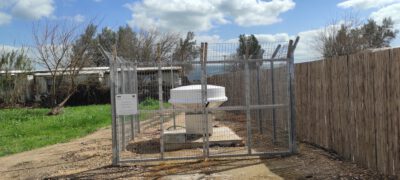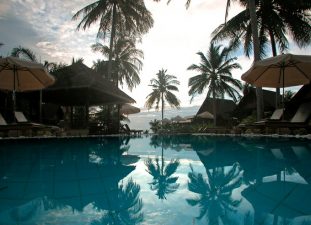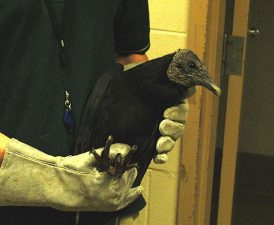These days traveling abroad for leisure or business isn’t just about checking off the must-see sights of any town or city. Getting out into the country, into nature and into the wild is gaining more appeal as people travel and linger longer, preferring to meet locals instead of just museums and famous landmarks. We want an immersive, meaningful experience. And seeing as we are expert level on Israel, we’ve put together with the help of a local guide Ofer Ashkenazi, a list of 10 must see ecological sites in Israel, the Holy Land.

Some from our list are a bit like a secret –– known to insiders but often missed by tourists.
If you are a first timer to Israel you can’t miss Jerusalem and the Old City, the Wailing Wall, Dome of the Rock. You won’t miss floating in the Dead Sea, trekking Masada (it was a tella novella!), bathing in Ein Gedi or jumping into the Sea of Galilee. If you have more than a week you will head down to the Red Sea and then spend a few days in Sinai. And if you are lucky to have a few weeks, it’s more than enough time to catch some spots on our list.
Ofer guided us recently to the jaw-dropping caves at Beit Guvrin. Though I’d lived in Israel for 20 years I’d never seen this UNESCO-protected World Heritage Site. So I checked in with Ofer to see what else I’d been missing in Israel. Turns out a lot.
Annual Bird Migration at the Mishmar HaSharon Reservoir

Pelicans in the Hula nature reserve, Yaniv Cohen
Want to see magnificent birds soar, nest, make v-formations or paint pictures in the sky? Bird watchers everywhere: It’s happening twice a year in the Spring and the Fall during the big bird migration. Plan ahead a bit to catch this natural wonder. Israel lies on a geological fault-line called the Syrian-African Rift. This long line of rock funnels the birds from Africa in the Spring to fly along Israel’s Mediterranean Coast, stopping along the way for food and drink as they head to Europe. The Mishmar HaSharon Reservoir is the alternate “bird refueling station” to the popular Hula Valley. And it’s where birds come to eat, drink, rest and party.
The Nature and Parks Authority, working in conjunction with the Ministry of Agriculture’s Fisheries Department, populates the reservoir with fish that are not intended for sale – just for pelicans. Catch the pelicans in action. But call ahead before you travel or work with a local guide so you don’t miss the timing. Bird migrations can also be spotted if you are in Jordan, Syria, Lebanon, and Turkey around these times of the year.
The Bell Caves at Bet Guvrin

Bet Guvrin, dovecoats and caves
If you have ever traveled to Turkey and seen the caves and cave-dwellers of Cappadocia, imagine something similar here but in caves underground. The Bell Caves in Israel are part of an ancient Biblical City called Marasha and the caves are carved chalk and lime quarries that were multifunctional –– as homes, burial caves, storerooms and dovecoats. Doves were raised there to sell to pilgrims as sacrifices they could make in Jerusalem.
The caves are something that your body will feel and enjoy as you imagine people from the past excavating the caves for chalk and blocks for building homes. You can see handwork etched into the walls of the caves. Ancient columbarium, another word for dovecoats (see below), can be explored underground in a network of about 500 caves at this National Park.

Like all National Parks in Israel, call in advance before you travel in case limits to entry are set. Closures can coincide with Jewish holidays of which there are many. Here is the Parks website.
These caves are lovely to explore on a hot day. You can feel the power of natural cooling, passive energy in effect.
Sharon Beach Nature Reserve

Sharon Beach Nature Reserve, image via A Tiny Trip
The Sharon Beach Nature Reserve can be accessed 24 hours a day, 7 days a week. There is no entrance fee but locals will know the best places to start your walk. The walk starts along the cliffs of the Sharon Beach, north of Tel Aviv. In February you can see lilies, in the summer possibly nude bathers. Don’t be alarmed. The trails are hidden gems that tourists don’t really get to explore. If you are with babies, toddlers or access-impaired, the trails aren’t stroller or wheelchair friendly.
Over all the trail offers an easy family hike for 2 to 3 hours, with small hills along the way and the option to go down to the beach at the start or end of the hike. The views and sea air make it all worthwhile. This trip is suggested if you are a hiking family in the Tel Aviv area looking for something close and easy to do for a half day hike. Hiking in summer months June to September should be done either early morning or late afternoon as it gets too sunny and hot on the beach during those times. Pack lots of water.
Water Lilies at Tel Afek

Tel Afek, water lilies, by Harvey Sapir
The Yarkon National Park is divided into two parts: Tel Afek area (and the Antipatris ruins) and the Yarkon Sources area, Together they constitute a green lung and an island of tranquility in the middle of the most populated Sharon region in Israel. In this beautiful and tranquil national park you’ll find the clean Yarkon Stream with abundant water lilies, a wading pool, a charming lake and an ancient fortress with a view of the region. The Yarkon Source center is on the Hod HaSharon – Petah Tikva road, between the Yarkon and Segula Intersections.
Tel Afek, also spelled Aphek and Afeq, is an archaeological site located in the coastal area of the Ein Afek Nature Reserve, east of Kiryat Bialik, Israel. It is also known as Tel Kurdani.
Visiting this location requires a reservation which can be done through a licensed tour guide or through this website. Venture to the Hayarkon Park in Tel Aviv. It’s an ecotourism site for exploring water, local animals,, art and history. It’s Israel’s version of Central Park, a nice place where you can be an active fly-on-the-wall and watch and join Israelis jogging, cycling, roller blading, skateboarding, kayaking, mountain climbing, and frisbee throwing. They also love to do acrobatics, acrobalance, and circus performing, with cute dogs and barbecues welcome. Starting from Tel Aviv’s Old Port, the park opens out into wide fields and a large lake as you get closer to the city of Ramat Gan. Start exploring by foot. Or rent a city bike, similar to the ones like Velo in Paris.
Visit Abraham’s Holy Land boundary

Tel Sheva, near Beersheba, where Abraham dug his well.
Don’t miss the southern limits of the Biblical Promised Land and the simplicity of Tel Sheva, located near a Bedouin town in Israel’s south with the same name, Tel as-Sabi in Arabic.
Nearby the ancient city of Beersheba you will see a wall and a double gate system. According to the Bible this is where Abraham first pitched his tent and dug a water well at Beersheba, a wilderness location identified in the Scriptures as the southern limit of the Promised Land. A nice history of the wall can be read here.
Visit the Canyon of Faces in Timna Park

Geologists say Timna Park is one of the Middle East’s top attractions for geological interest, and multicolored sand, combined with its towering sandstone pillars. Image via Getty.
It’s not exactly the Alamo or Jordan’s lost city of Petra, but the mountains of Timna Park do delight.
Timna Park is a hiker’s paradise and offers approximately 25 hiking trails, most of which are short (20 to 60 minute treks) and are suitable for the whole family. A minority of trails are challenging and intended for professional hikers. The trails pass through various Park sites such as the Mushroom, Pillars of Solomon, and other stunning geological formations.
Explore the park on foot and visit the Canyon of Faces with its many geological formations that nature has created in the rocks, climb Mount Timna or walk from Spiral Hill to the Valley of Rock Paintings and the Chariots.
Agricultural Terraces in the Judean Mountains

Agriculture terraces in Battir. Image via Olivier Fitoussi
If you were a farmer in ancient Jerusalem, you have a couple of choices with the rocky land you inherited from your father: find a new location with less rock and problems, or clear the rocks on the hills and farm there. With little water or fertile land the ancients made do.
Some of the earliest terraces in the Southern Levant areas, including the ones around Jerusalem, were probably used for the cultivation of grapes, olives, pomegranates and figs. Grapes grown for wine might have been wine used at the Holy Temple. And farming wasn’t easy back then: most farming on the terraced areas of the Judean Mountains was done without artificial irrigation. Remains of ancient farmers can be found and explored best around Sataf. This village has agricultural terraces that have been restored and you can find vines and olive, fig, pomegranate and almond trees. Hiking trails are laid out along the way to create an outdoor “foots-on” museum of ancient agriculture. Look for Nahal Sorek when out. Locals set up interesting and cosy cafes and restaurants around the region.
Also you can’t leave Israel without forming some opinion about something. There is debate over the age of the terraces that challenge the “ancient” narrative. Some saying they are relatively young, about as old as the Ottoman empire in Israel. Start with this article to hear another side.
Watch Sea Turtles Released

The Sea Turtle Rescue Center in Israel releases a turtle they will be monitor. Via AP
Israel is home to a healthy sea turtle population that maintains nests along the Mediterranean beaches. The best way to find turtle sightings is to contact the Sea Turtle Rescue Center and they can advise on the best times and current locations for finding turtle hatching grounds.
The rescue center works to rehabilitate sea turtles on a number of levels:
- Treatment and rehabilitation of injured sea turtles and their reintroduction to the wild in the Eastern Mediterranean. Be there for a release.
- Physical protection of the eggs laid on beaches and in reproduction areas.
- Protection of the marine environment and the beaches and statutory declaration of marine and beach areas as marine reserves.
The Hazur Stream and Nimrod’s Fortress in the Golan Heights

Nimrod’s Fortress, a Crusader-era Medieval castle in Israel. The Crusaders fortified the Arab fortress of Kil’at Subeiba (“Large cliff”), located 6KM above the city, calling it by the Biblical name – Nimrod Fortress.
The Hazur Stream is about 3 miles long and is found in the northern part of the Golan Heights. It is a tributary of the Govta Stream, which is one of the sources of the Banias Stream. The trail begins near the Druze village of Majdal Shams but there are challenging hiking trails that guide you along the river and which are leading around the area to Nimrod’s Fortress. The fortress is named after a biblical hero, the hunter Nimrod (Genesis 10:8 to 9) who, according to local tradition, dwelt on this summit. The Nimrod Fortress is the biggest Crusade-era castle in all of Israel, a mountain-top stronghold spanning back to the 13th century.
Follow the banks of the Hazur stream and find a thick Mediterranean grove, which includes oak, Terebinth, Judas trees and True Laurel. By the end of the winter and the beginning of the spring meet strong water and waterfalls along the way. At the end of the summer and in the fall you can find minor waterfalls that can still be enjoyed through caverns of shade created by the thick underbrush. The area is magical.
Getting there: Majdal Shams is a Druze town in the southern foothills of Mount Hermon, north of the Golan Heights, known as the informal “capital” of the Golan Heights. The majority of residents are Syrian Druze. Take highway 6 to Majdal Shams and you are there in about 2.5 hours.
There isn’t a great source of information on the Hazur stream online, but start here with the Nature Authority’s website on the Banias region.




